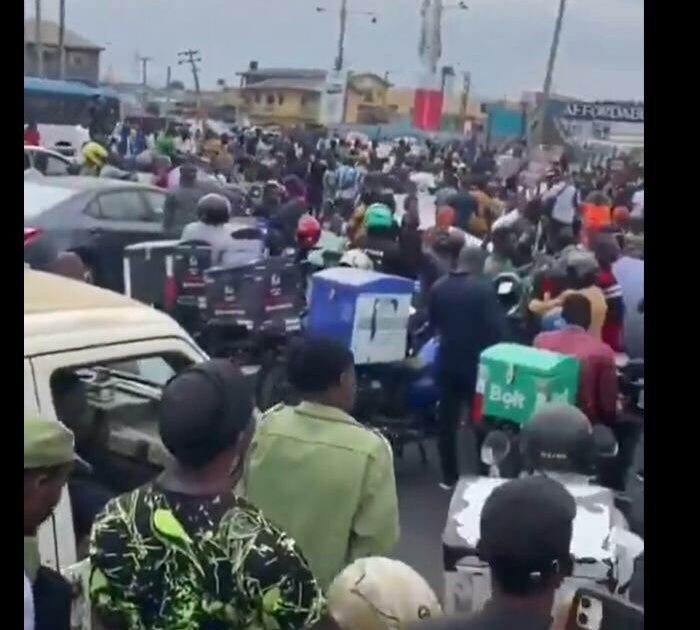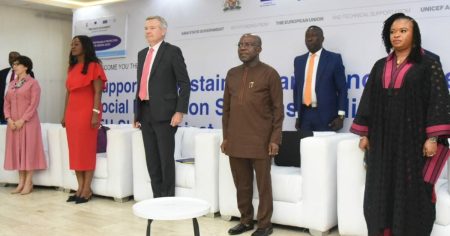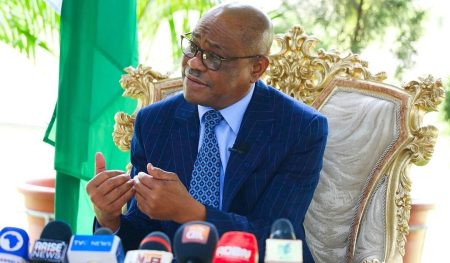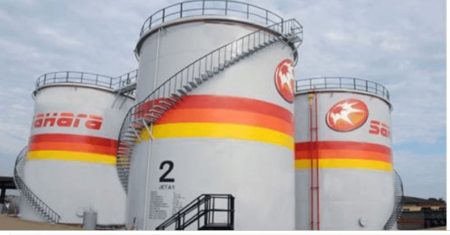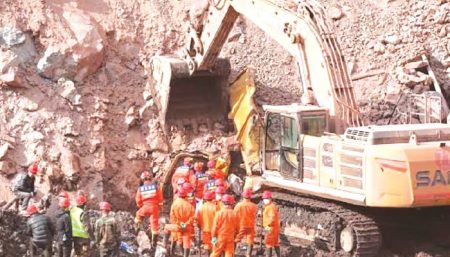On Monday, September 8, 2025, residents of the Oworonshoki community in Lagos, Nigeria, staged a protest that disrupted traffic on the Third Mainland Bridge, a major artery in the city. The demonstration was sparked by the demolition of structures deemed illegal by the Lagos State Government along the Iyana Oworosonki coastal line. These structures, primarily residential buildings, had been marked for demolition, and residents had reportedly been served with a one-month quit notice. However, the occupants remained, leading to the forced evictions carried out by a combined enforcement team from the state government on the preceding Saturday. The protest, which involved blocking a section of the bridge, caused significant traffic congestion, highlighting the residents’ frustration and desperation following the loss of their homes.
The residents’ protest underscores a complex interplay of factors that frequently characterize urban development in rapidly growing cities like Lagos. The demolition of these structures raises critical questions about housing affordability, urban planning, and the government’s responsibility to provide adequate housing solutions. For the affected residents, the demolition represents a significant loss, potentially pushing them into homelessness or precarious living situations. While the government might justify the demolitions on grounds of illegal construction or urban renewal plans, the incident exposes the challenges of managing rapid urbanization and ensuring that development initiatives don’t disproportionately affect vulnerable populations. The protest reflects a sentiment of displacement and marginalization, with residents feeling their voices are not being heard in the decision-making processes that directly impact their lives.
The Lagos State government’s response, communicated through the Senior Special Assistant on New Media to the Governor, Jubril Gawat, confirmed the reopening of the bridge after intervention by the Nigeria Police Force. Gawat’s statement on X (formerly Twitter) primarily focused on the restoration of traffic flow, indicating a priority given to maintaining order and minimizing disruption to daily life. While acknowledging the traffic backlog caused by the protest, the official communication did not directly address the root cause of the demonstration, namely the demolition of homes and displacement of residents. This suggests a potential gap in communication and engagement between the government and the affected community, further fueling the residents’ discontent.
The incident highlights a broader issue in urban governance: the balance between enforcing regulations and protecting the welfare of citizens. Demolitions of unauthorized structures, while potentially necessary for urban planning or safety reasons, can have severe humanitarian consequences. It’s essential for governments to approach such interventions with sensitivity, ensuring adequate notice, relocation assistance, and open dialogue with affected communities. In this particular case, the seemingly short notice period and the lack of apparent resettlement plans contributed to the residents’ desperation and their decision to resort to disruptive protest. This points to a need for more comprehensive and compassionate approaches to urban development that prioritize human welfare alongside regulatory compliance.
The Oworonshoki protest also serves as a reminder of the importance of accessible and affordable housing in urban areas. Rapid urbanization often leads to informal settlements and unauthorized constructions as people struggle to find affordable housing options. Addressing this requires a multi-pronged approach, including increased investment in affordable housing projects, streamlined land allocation processes, and community-driven development initiatives. Failing to address the root causes of informal settlements will likely lead to more forced evictions and social unrest in the future. The government’s response to this incident should go beyond simply reopening the bridge; it should involve a deeper engagement with the affected community to address their housing needs and prevent similar situations from occurring in the future.
In conclusion, the protest on the Third Mainland Bridge following the demolition of structures in Oworonshoki serves as a stark reminder of the challenges associated with rapid urbanization, inadequate housing provisions, and the need for more effective communication and engagement between government and citizens. The government’s response, focused primarily on restoring traffic flow, underscores a potential disconnect between policy decisions and their impact on vulnerable populations. Moving forward, a more comprehensive approach to urban development is required, one that prioritizes human welfare alongside regulatory compliance and addresses the root causes of informal settlements to prevent further displacement and social unrest. The incident calls for a renewed focus on providing accessible and affordable housing options, transparent communication, and meaningful engagement with communities facing potential displacement due to development initiatives.





